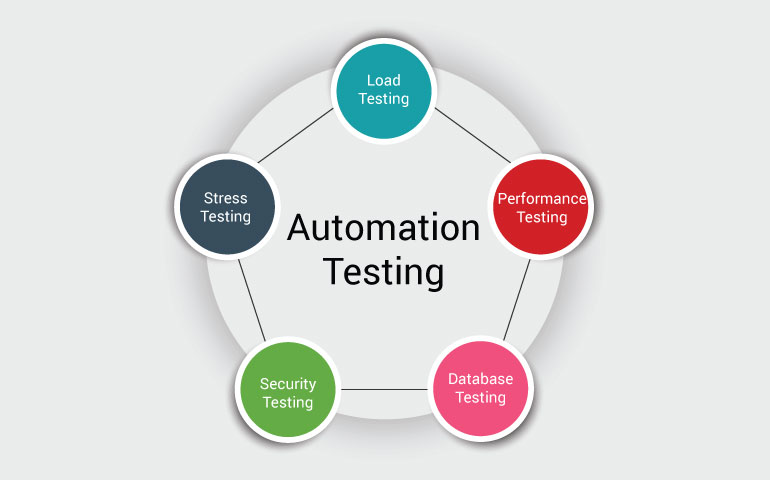Efficient Automation Testing: Enhancing Software Program Dependability and Rate
Making Sure Success in Automation Evaluating: Trick Metrics, Challenges, and Solutions Every QA Team Need To Know
In the realm of software application quality assurance, the landscape of automation screening is ever-evolving, demanding a careful strategy to ensure seamless operations. Key metrics function as the compass directing QA groups via the vast surface of examination automation, losing light on development and locations for improvement. However, difficulties impend big, typically casting shadows on the course to success. By understanding these obstacles and carrying out reliable solutions, QA teams can navigate with intricacies with skill. The journey to mastering automation testing is paved with subtleties that call for a keen eye for tracking, evaluation, and continuous enhancement. automation testing. As the sector pushes ahead, the mission for optimum performance in automation screening stays a continuous pursuit, advising QA groups to furnish themselves with the knowledge and strategies crucial for triumph.
Importance of Trick Metrics
Understanding the importance of essential metrics is essential for evaluating the efficiency and effectiveness of automation screening processes. Key metrics offer as quantifiable procedures that supply important understandings into various facets of the testing procedure, such as test coverage, examination execution time, issue thickness, and test instance performance. By analyzing these metrics, QA groups can identify bottlenecks, inefficiencies, and locations for renovation within their automation screening structure.
One vital element of essential metrics is their capability to track progression and monitor the general health of the testing procedure (automation testing). They enable stakeholders to make informed choices based upon data-driven understandings, which can result in extra efficient testing approaches and better source allocation. Furthermore, vital metrics can help teams established reasonable objectives, gauge the success of automation initiatives, and show the ROI of automation testing initiatives

Usual Difficulties Dealt With
Challenges commonly encountered in automation screening procedures can substantially affect the general efficiency and performance of QA groups. Among the significant challenges is the option of the appropriate examination situations for automation. Not all examination situations are appropriate for automation, and picking the incorrect ones can lead to lost time and resources. In addition, preserving test manuscripts can be an overwhelming task, specifically as the application undergoes regular changes. Test manuscript maintenance calls for continuous updates and alterations to ensure they show the current performance properly. An additional common obstacle is the initial financial investment needed for setting up automation structures and devices. This can be a barrier for some companies, particularly smaller ones with minimal budget plans. Automation screening may not cover all elements of screening, such as usability and individual experience screening, which still require hands-on treatment. Getting rid of these obstacles needs proper preparation, tactical test situation option, durable maintenance processes, appropriate sources, and a clear understanding of the constraints of automation testing.
Effective Solutions for Obstacles
To resolve the challenges run into in automation testing, implementing reliable solutions is see post necessary for improving the performance and productivity of QA teams. One vital solution is to purchase robust training programs for QA teams to guarantee they have the essential skills to effectively use automation tools. Training can connect knowledge gaps, boost understanding of automation frameworks, and improve scripting abilities, inevitably leading to much more efficient examination creation and execution.
Another essential service is to develop clear communication networks within the QA team and with various other stakeholders, such as designers and task managers. Reliable communication aids in lining up expectations, sharing progression updates, and without delay addressing problems or roadblocks that might occur during the automation screening procedure.

Surveillance and Evaluation Strategies
Implementing reliable monitoring and evaluation techniques is vital for making sure the success see this here and efficiency of automation screening procedures. Furthermore, assessing test outcomes and metrics provides useful insights right into the quality of the software application being tested and the performance of the screening technique.
One key technique in monitoring and evaluation is using dashboards that consolidate pertinent metrics and KPIs in an aesthetically obtainable layout. These control panels use a detailed review of test execution standing, examination protection, problem trends, and various other important information. Routinely reviewing and evaluating these control panels can assist QA teams make educated decisions, focus on jobs, and enhance testing efforts.
Moreover, implementing automated informs and notifications based upon predefined limits can improve aggressive surveillance and prompt treatment. By establishing notifies for performance variances or examination failings, groups can address problems immediately and stop them from intensifying. On the whole, tracking and evaluation techniques play an important role in making sure the efficiency and success of automation testing initiatives.
Continuous Improvement Approaches
Enhancing the effectiveness of automation screening procedures requires the consistent improvement of techniques and techniques. One key strategy to boosting automation testing procedures is to carry out routine evaluations and retrospectives.

Verdict
In final thought, it is vital for QA groups to recognize the vital metrics, challenges, and remedies in automation screening to make certain success. By meticulously keeping track of and examining information, applying reliable solutions to usual obstacles, and continuously improving strategies, QA groups can maximize their screening procedures and supply high-grade software items. Adhering to these techniques will inevitably result in extra reliable index and reliable automation testing methods.
By evaluating these metrics, QA teams can determine traffic jams, inefficiencies, and locations for renovation within their automation testing framework.
In addition, crucial metrics can assist teams set practical goals, gauge the success of automation efforts, and demonstrate the ROI of automation testing initiatives.
Challenges generally come across in automation testing processes can significantly affect the general efficiency and performance of QA teams. Automation screening may not cover all facets of screening, such as functionality and user experience testing, which still call for hand-operated intervention.In conclusion, it is vital for QA groups to understand the vital metrics, difficulties, and solutions in automation testing to make sure success.